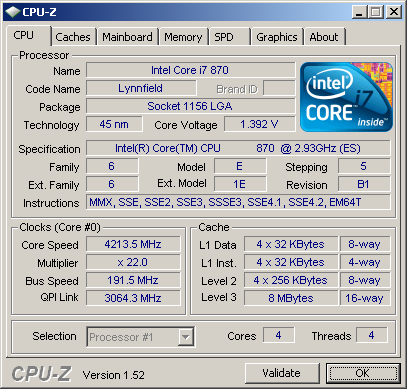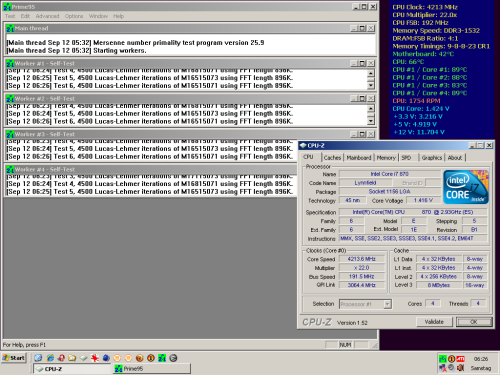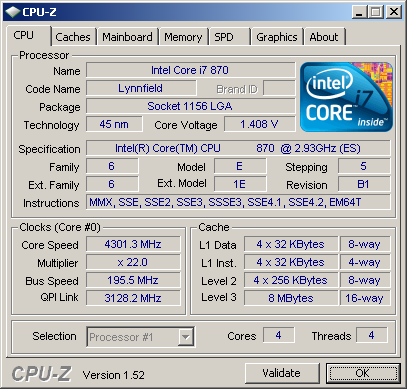Index
Page 3 of 8
As you know the i7-870 runs at 2.93GHz, has four cores, supports hyperthreading and has a TDP of 95W. Of course the i7-8xx series features a PCIe 2.0 x16 controller which can be split to two x8 ports. The Turbo has been improved, for core one you get 3.60GHz, the second is 3.46GHz and the other two go up to 3.20GHz. Surprisingly the VCore is lower compared to the i5 series and is 1.17500V. We don't have an i7-950 CPU, but we suspect it will give this CPU a run for its money. We don't think hyperthreading is really as beneficial as Intel would like to believe you. In most cases it does nothing, in some it does improve performance, but there are some applications in which it will reduce performance.
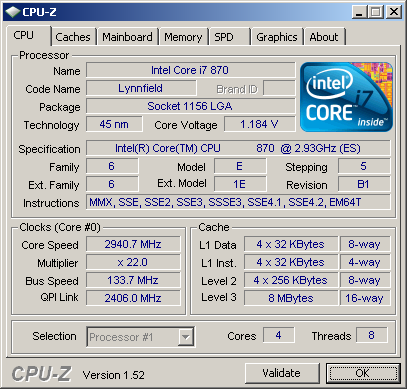
While Turbo mode is a nice feature for all users who don't want fiddle with overclocking settings, it will increase the performance especially with applications not optimized for multithreading. However, we guess everyone reading our site knows how to handle these things, so we don't really care about Turbo mode.
Overclocking:
As usual when overclocking you should disable the turbo, but ignore all the warnings about disabling EIST, Speedstep or any other energy saving settings. This is only necessary for extreme overclockers with liquid nitrogen. We only use an air-cooler, so let's see what it can do.
If you recall our i5-750 review, we could not explain why the voltages increased. Reason for this behavior is Load Line Calibration. The problem is, the settings are reversed in the BIOS, so disabled means enabled and vice versa.
For 3.60GHz and Load Line Calibration (LLC) disabled you need about 1.2750V VCore or you enable LLC and stay with the 1.1750V. With LLC disabled the VCore will drop about 0.100V. If you leave the BIOS to auto, most boards will increase the voltage, our board does to 1.3500V.
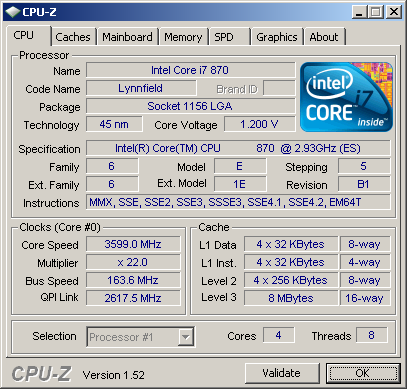
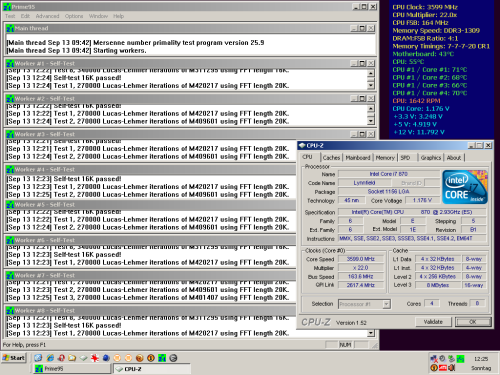
The next step was to go for 4GHz which is the magical barrier. We upped the VCore to 1.3750V and VTT to 1.222V. With Turbo disabled, all cores ran at this speed, and they ran like a charm.
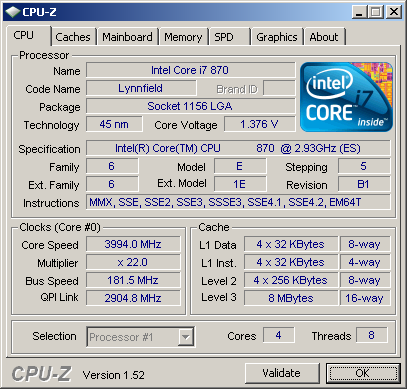
And now it gets difficult. If you keep hyperthreading enabled it is much harder to get higher clocks. Also the VDroop is very high on Intel i5/i7 CPUs, so you get higher clocks when you have a feature such as "Load Line Calibration" or "VDroop control" enabled. Of course this does increase power-consumption. While we could get 4.20GHz at 1.4000VCore LLC enabled and a VTT/QPI voltage of 1.270V we could run a stable test. This test failed with 4.3GHz but all our benches run fine, because they do not use 100% of the CPU. Besides that, Prime doubles the temperature in the core which can overshoot 90°C which is not healthy at all.
